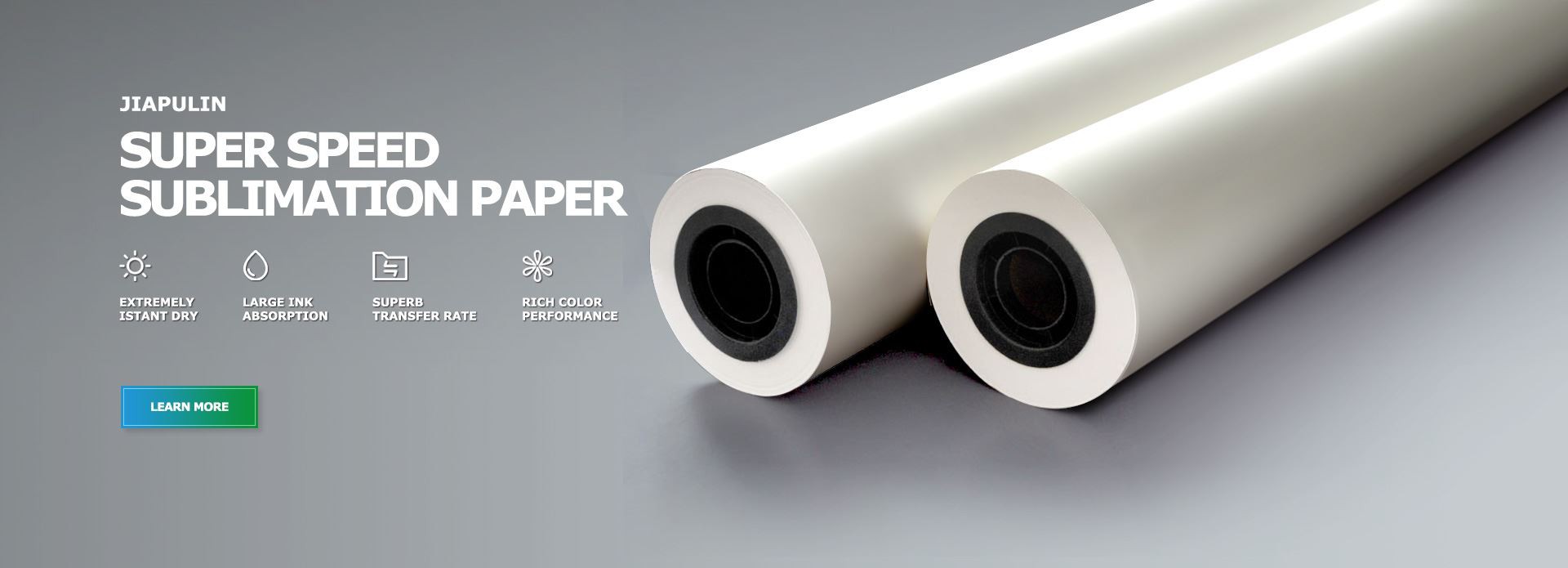Manufacturing method of quick-drying sublimation paper
Jun 12, 2024
The manufacturing method of quick-drying sublimation paper involves the manufacturing field of sublimation transfer paper, which can solve the contradiction between the transfer rate and drying speed of the transfer paper and accelerate the drying speed.
Select base paper with strong water resistance, first apply a sublimation transfer ink-retaining coating on the front of the base paper; then apply a coating that is beneficial to improving the water absorption of the paper on the back of the base paper, and the glue of the back coating is water + surfactant or water + starch + surfactant, wherein the mass percentage of the surfactant is 0.5%-5%, and the mass percentage of starch is 0.5%-3%. Thermal sublimation transfer is a new process that uses an inkjet printer equipped with thermal sublimation transfer ink to print portraits, landscapes, texts and other images on thermal sublimation transfer inkjet paper in a mirror image manner, and then heats it to about 200℃ through thermal transfer equipment to make the thermal transfer ink on the thermal sublimation paper sublimate and penetrate into the substrate, thereby realistically transferring the color image on the paper to textiles, porcelain cups, porcelain plates, porcelain plates, metals and other materials. Thermal sublimation transfer images are bright and rich in color, and its effect is comparable to printing.
Initially, the thermal sublimation transfer paper used in thermal transfer sublimation technology could only be imported. After the technology was introduced to China, it developed rapidly. However, most domestic manufacturers of thermal sublimation transfer paper currently have incomplete technology and backward equipment. They can only produce low- and medium-grade thermal sublimation transfer paper for production with low requirements for thermal sublimation transfer. For thermal sublimation transfer with higher requirements, imported paper with relatively high prices is required. The main reason is that the domestic thermal sublimation transfer paper production process has problems such as low transfer rate and slow drying speed. The drying speed of thermal sublimation transfer paper after printing ink directly determines the efficiency of thermal sublimation transfer. Fast drying speed can make it convenient for users to use, facilitate continuous printing, and improve delivery speed. Usually, after thermal sublimation transfer paper prints water-based ink, it relies on the coating water-absorbing material and base paper to absorb the water in the ink to achieve the goal of drying. The drying performance of thermal sublimation transfer paper is mainly related to the coating formula and the water absorption of the base paper. The water absorption capacity of the base paper is related to the sizing strength. If the base paper is too poorly sizing (that is, the water absorption is too strong), it is easy to cause excessive migration of the thermal sublimation coating into the paper during coating, thereby reducing the coating's ability to block thermal sublimation ink, causing the dye molecules in the ink to migrate to the base paper layer. Although the defects can be compensated by increasing the coating thickness, if the coating is too thick, it will cause curling problems, causing inconvenience in use, thereby affecting the application performance of the product.
In order to improve the drying speed of thermal sublimation transfer paper, some manufacturers start with the coating and increase the proportion of water-absorbing materials in the coating, such as silica, alumina, etc., so as to improve the water absorption capacity of the coating. However, these materials will also absorb water-absorbing thermal sublimation dye molecules, which will make it difficult for the dye molecules to sublimate to the textiles during the thermal transfer process, resulting in a decrease in the transfer rate and affecting the performance of the product.
https://www.jiapulin-print.com/







